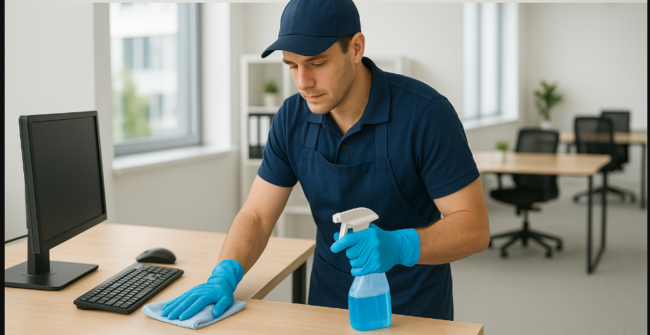
Your favorite armchair has seen better days. That couch where you binge-watch Netflix every weekend is starting to look a little tired. And don’t even get started on what the kids have done to the dining room chairs.
Sound familiar? You’re not alone. Most of us love our furniture but struggle to keep it looking fresh and clean. The good news is that proper upholstery cleaning doesn’t require expensive professional services every few months. With the right techniques and a little know-how, you can extend the life of your furniture significantly while keeping it looking great.
This guide will walk you through practical, tested methods that actually work—no fancy equipment or harsh chemicals required. Your furniture (and your wallet) will thank you.
Know Your Fabric Before You Clean
Before diving into any upholstery cleaning routine, take a moment to identify what you’re working with. Different fabrics require different approaches, and using the wrong method can cause permanent damage.
Check for care labels on your furniture—they’re usually tucked under cushions or along the back. Look for these common codes:
- W: Water-based cleaners are safe
- S: Solvent-based cleaners only
- WS: Either water or solvent cleaners work
- X: Vacuum only, no liquid cleaners
If you can’t find a label, do a spot test in an inconspicuous area before proceeding with any cleaning method.
The Power of Regular Maintenance
The best upholstery cleaning hack is surprisingly simple: don’t let dirt build up in the first place. Regular maintenance takes just a few minutes but makes a huge difference.
Vacuum your upholstered furniture weekly using the brush attachment. This removes surface dirt, pet hair, and debris before they work their way deep into the fibers. Pay special attention to crevices where crumbs and dust love to hide.
Flip and rotate cushions regularly to ensure even wear. This simple step prevents one side from getting significantly more faded or worn than the other.
DIY Cleaning Solutions That Work
You don’t need a cabinet full of expensive cleaners. These household ingredients can tackle most upholstery cleaning challenges:
For general cleaning: Mix one tablespoon of dish soap with two cups of cool water. This gentle solution works on most water-safe fabrics.
For tough stains: Create a paste with baking soda and water. Let it sit for 15 minutes before gently brushing away.
For odor removal: Sprinkle baking soda generously over the fabric, let it sit overnight, then vacuum thoroughly.
For grease stains: Cornstarch absorbs oil beautifully. Sprinkle it on fresh grease stains, wait 10 minutes, then vacuum up.
Tackle Stains Like a Pro
Speed is your friend when dealing with stains. The faster you act, the better your chances of complete removal.
Start by blotting—never rubbing—to absorb as much of the spill as possible. Rubbing pushes the stain deeper into the fibers and can damage the fabric.
Work from the outside of the stain toward the center to prevent spreading. Use a clean white cloth or paper towels to avoid transferring dyes onto your furniture.
For water-based stains like juice or coffee, use your soap solution and blot gently. For oil-based stains, try the cornstarch method first, then follow up with a small amount of dish soap if needed.
Deep Cleaning Without the Professional Price Tag
Even with regular maintenance, your furniture will need deeper cleaning occasionally. Here’s how to do it yourself:
- Remove all cushions and vacuum thoroughly, including the frame and under cushions
- Test your chosen cleaning solution in an inconspicuous spot
- Work in small sections, applying cleaner with a soft brush or cloth
- Use a clean, damp cloth to remove soap residue
- Allow furniture to air dry completely before using
For stubborn odors, enzyme cleaners work wonders on organic stains like food or pet accidents. These cleaners break down the odor-causing compounds rather than just masking them.
When to Call in the Professionals
While DIY upholstery cleaning handles most situations, some scenarios call for professional help:
- Antique or delicate fabrics
- Large stains covering significant areas
- Water damage or flooding
- Strong odors that won’t respond to home treatments
- When manufacturer warranties require professional cleaning
Protecting Your Investment
Prevention really is the best medicine for upholstery. Consider these protective measures:
Use furniture covers if you have pets or small children. Modern covers come in attractive styles that complement your decor rather than hiding it.
Keep furniture away from direct sunlight to prevent fading. If repositioning isn’t possible, consider window treatments to filter UV rays.
Address spills immediately. The longer a stain sits, the harder it becomes to remove.
Simple Steps for Long-Lasting Results
Extending your furniture’s life doesn’t require complicated routines or expensive products. Consistent care using these simple upholstery cleaning methods will keep your pieces looking great for years to come.
Start with regular vacuuming and spot cleaning, then incorporate deeper cleaning as needed. Your furniture has given you countless comfortable moments—returning the favor with proper care ensures many more years of enjoyment.
Remember, the goal isn’t perfection. It’s about maintaining furniture that looks good and feels comfortable in your home. With these practical approaches, you’ll be amazed at how much life you can add to pieces you thought were ready for replacement.
